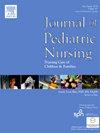哪个因素ımpacts儿科患者的医疗创伤应激:范围审查
IF 2.3
4区 医学
Q2 NURSING
Journal of Pediatric Nursing-Nursing Care of Children & Families
Pub Date : 2025-09-09
DOI:10.1016/j.pedn.2025.09.001
引用次数: 0
摘要
目的本综述的目的是系统地绘制、分类和综合现有的研究,以确定在接受临床护理的儿科患者中发生医疗创伤应激的相关因素。方法本综述遵循Booth等人(2021)提出的方法学框架,并遵循PRISMA-ScR指南。6个电子数据库(PubMed, Web of Science, Cochrane Library, MEDLINE, CINAHL和Scopus)被系统检索到2024年12月12日。结果纳入了14项初步研究,涵盖了接触外科手术、重症监护、慢性疾病、肿瘤治疗和严重感染的不同儿科人群。在所有研究中,小儿经前症候群的症状频率从8.6%到60%不等。与儿童相关的主要风险因素包括年龄较小、先前存在的情绪困难、与住院有关的焦虑和对死亡的恐惧。与家庭相关的因素,如父母PTSD症状、照顾者压力和家庭功能不佳显著影响结果。医疗相关因素,如感知生命威胁、紧急手术、反复干预和住院时间增加了经前综合征的风险。社会环境影响,包括低社会经济地位、少数民族背景、与大流行病有关的孤立和社会混乱,进一步加剧了脆弱性。结论儿童医学创伤应激是心理、家庭、医学和社会环境等多种因素共同作用的结果。研究结果强调了创伤知情,以家庭为中心的护理方法在儿科医疗保健设置的关键需要。临床意义经前综合征风险因素的多层面性强调了早期筛查、创伤知情儿科护理和针对儿童发育、心理和社会文化背景的以家庭为中心的干预措施的迫切需要。本文章由计算机程序翻译,如有差异,请以英文原文为准。
Which factor ımpacts medical traumatic stress for pediatric patients: Scoping review
Purpose
The objective of this scoping review was to systematically map, categorize, and synthesize the existing research identifying the factors associated with the development of medical traumatic stress in pediatric patients receiving clinical care.
Methods
This review followed the methodological framework proposed by Booth et al. (2021) and adhered to the PRISMA-ScR guidelines. Six electronic databases (PubMed, Web of Science, Cochrane Library, MEDLINE, CINAHL, and Scopus) were systematically searched until December 12, 2024.
Results
Fourteen primary studies were included, covering diverse pediatric populations exposed to surgical procedures, intensive care admissions, chronic illnesses, oncological treatments, and severe infections. PMTS symptom frequency among pediatric patients ranged from 8.6 % to 60 % across studies. Key child-related risk factors included younger age, pre-existing emotional difficulties, hospitalization-related anxiety, and fear of death. Family-related factors such as parental PTSD symptoms, caregiver stress, and poor family functioning significantly influenced outcomes. Medical-related factors such as perceived life threat, emergency surgeries, repeated interventions, and hospitalization duration heightened PMTS risk. Socio-environmental influences, including low socioeconomic status, minority background, pandemic-related isolation, and social disruptions, further exacerbated vulnerability.
Conclusion
Pediatric medical traumatic stress arises from a complex interplay of psychological, familial, medical, and socio-environmental factors. The findings highlight the critical need for trauma-informed, family-centered care approaches in pediatric healthcare settings.
Clinical implications
The multidimensional nature of PMTS risk factors emphasizes the urgent need for early screening, trauma-informed pediatric care, and family-centered interventions tailored to the child's developmental, psychological, and sociocultural context.
求助全文
通过发布文献求助,成功后即可免费获取论文全文。
去求助
来源期刊

Journal of Pediatric Nursing-Nursing Care of Children & Families
NURSING-PEDIATRICS
CiteScore
3.70
自引率
8.30%
发文量
291
审稿时长
65 days
期刊介绍:
Official Journal of the Society of Pediatric Nurses and the Pediatric Endocrinology Nursing Society (PENS)
The Journal of Pediatric Nursing: Nursing Care of Children and Families (JPN) is interested in publishing evidence-based practice, quality improvement, theory, and research papers on a variety of topics from US and international authors. JPN is the official journal of the Society of Pediatric Nurses and the Pediatric Endocrinology Nursing Society. Cecily L. Betz, PhD, RN, FAAN is the Founder and Editor in Chief.
Journal content covers the life span from birth to adolescence. Submissions should be pertinent to the nursing care needs of healthy and ill infants, children, and adolescents, addressing their biopsychosocial needs. JPN also features the following regular columns for which authors may submit brief papers: Hot Topics and Technology.
 求助内容:
求助内容: 应助结果提醒方式:
应助结果提醒方式:


